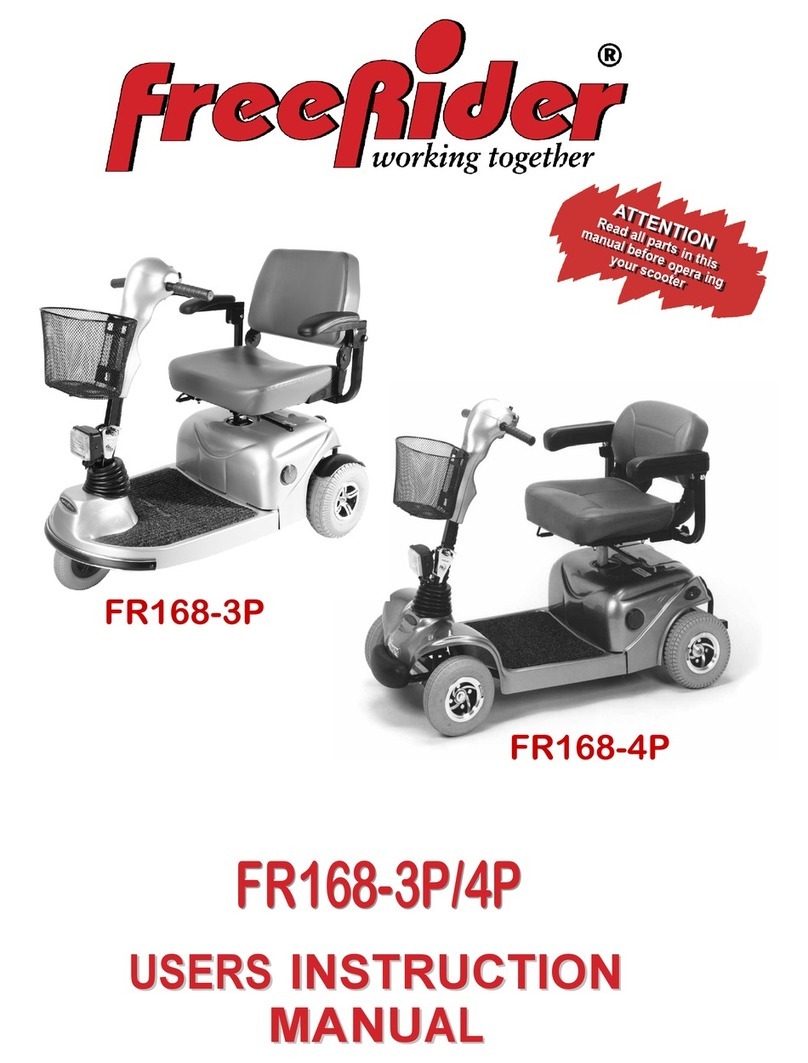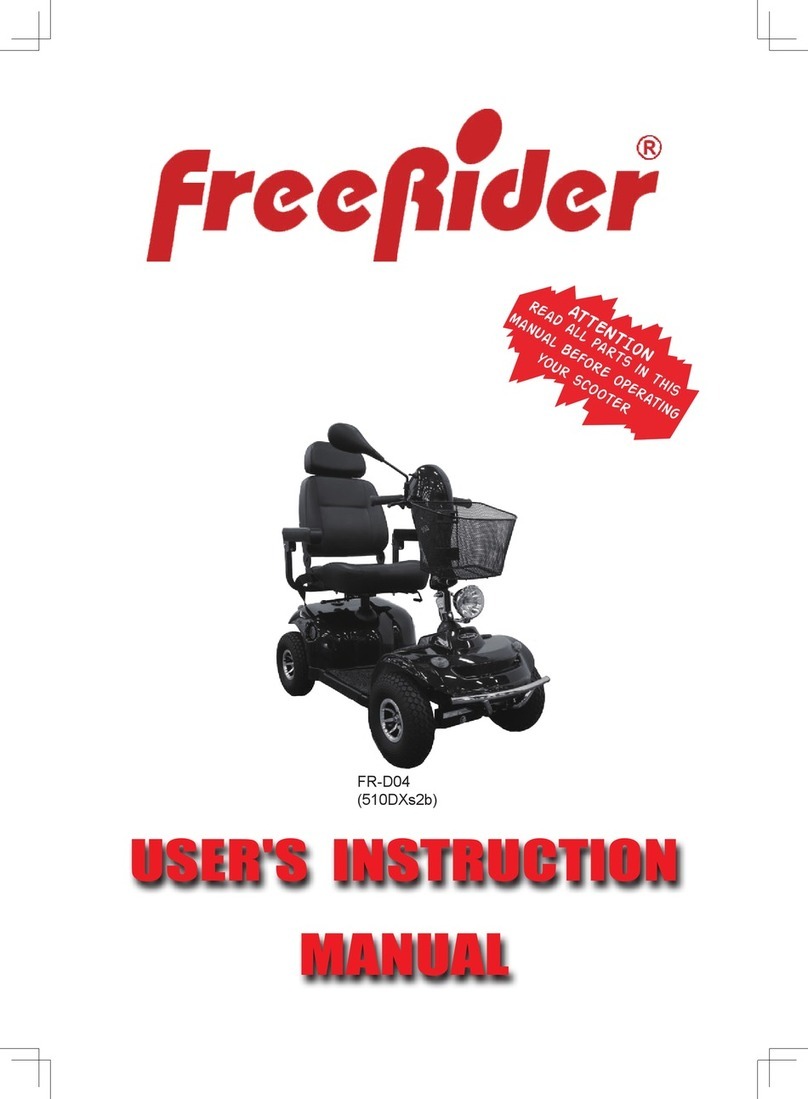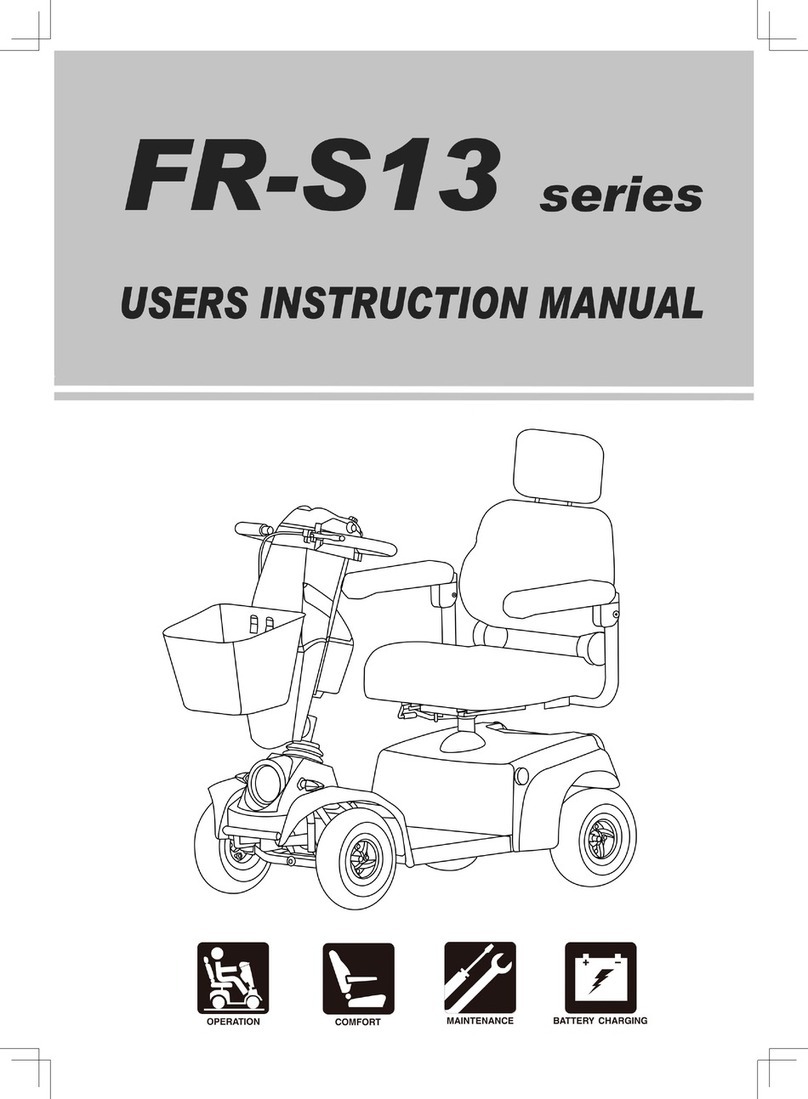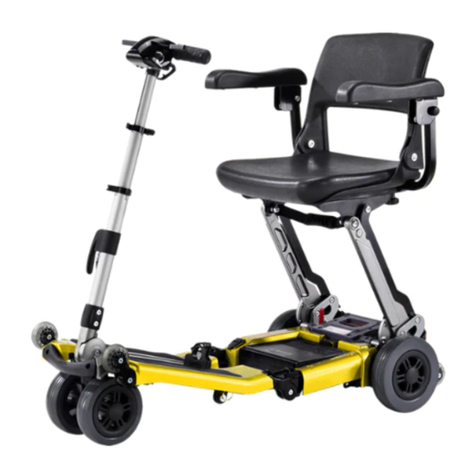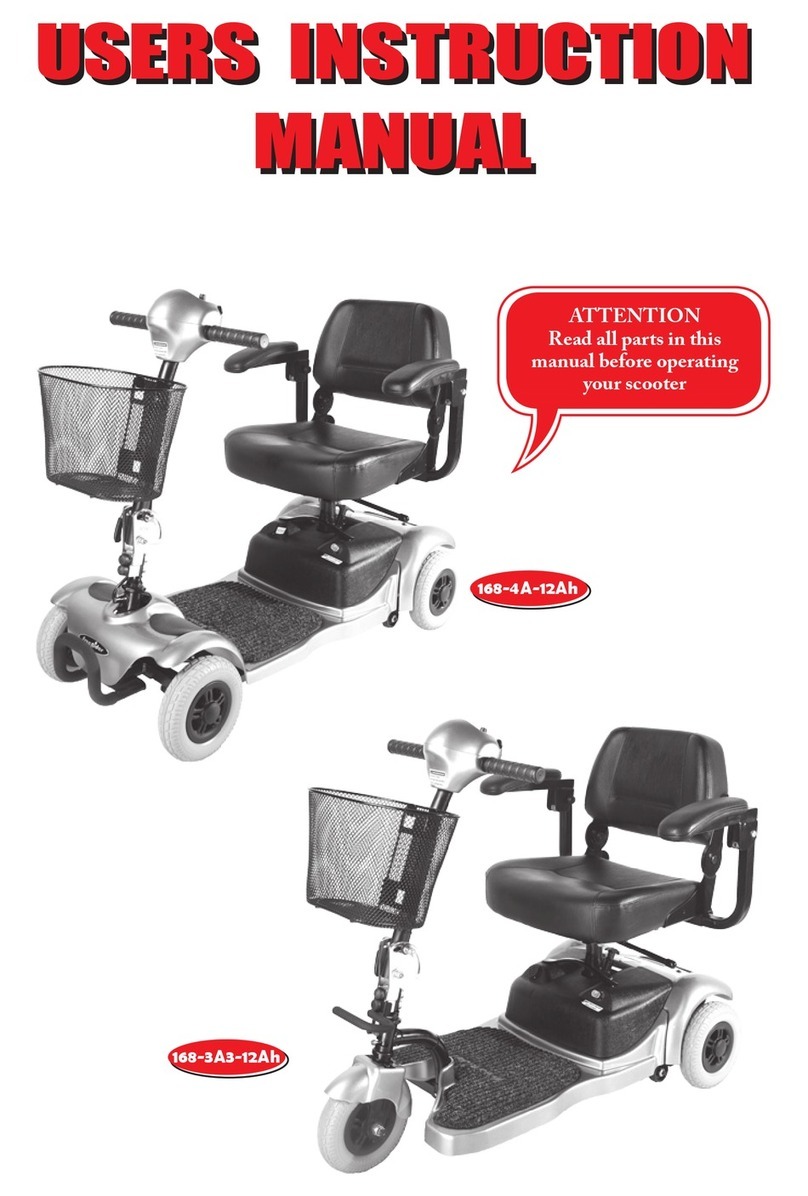COMFORT ADJUSTMENTS
Before setting out on your scooter, you need to make sure that your seat is in the correct
driving position. Your dealer will set the seat to the correct height for your individual needs.
The scooter has eight basic adjustments to assist your comfort.
1. Seat Lock Lever:
This allows the seat to swivel through 360 degree. Pull
up the seat lock lever fully to release the seat allowing
rotation. Release lever to lock the seat into the desired
position.
7
3. Armrest Width Adjustment:
On each side at the rear of the seat you will nd a large
black knob. By simply loosening this knob you are
able to slide the armrests in or out to whatever width
you desire. Re-tighten the knobs fully. You may need a
friend to assist you with this initial setting up operation.
This may extend the width of your scooter.
Caution: The backrest of your seat will not fully fold forwards if the armrests are
positioned too closely towards one another.
Warning: DO NOT drive your scooter with the arms removed or in the raised
position.
The armrest angle can be adjusted individually to suit
your needs. To make adjustments to the armrest angle
you will need two 13mm spanners (not provided). Lift
the arm upwards, you will note the adjusting bolt. First
loosen the locking nut, rotate the bolt in or out until the
required angle is found, lower the arm and check the
angle for comfort; re-adjust as necessary. Finally tighten
the locking nut.
Caution: The seat locking lever must be
locked in place and be lifted up fully when
rotating the seat, failure to observe this may
result in unnecessary wear of the seat post.
Removing Seat From Scooter:
Note: When you want to remove the seat you must go through a special lifting point on the
mounting post. This lifted point is 90 degree counting from the horizontal direction.
(1)
(2)
(3)
Pull up seat lock lever fully.
In the meantime rotate the seat to 90 degree from the straight ahead position.(either left or
right side)
Lift up and remove the seat carefully.
2. Seat Back Adjusted:
(1)
(2)
Pulling up on the seat back adjustment lever, lean forward or backward to adjust the seat
back.
Release the seat back adjustment lever once the seat is in a comfortable riding position.
Note: The seat back angle can be adjusted to a maximum angle of 102.8 degree.


